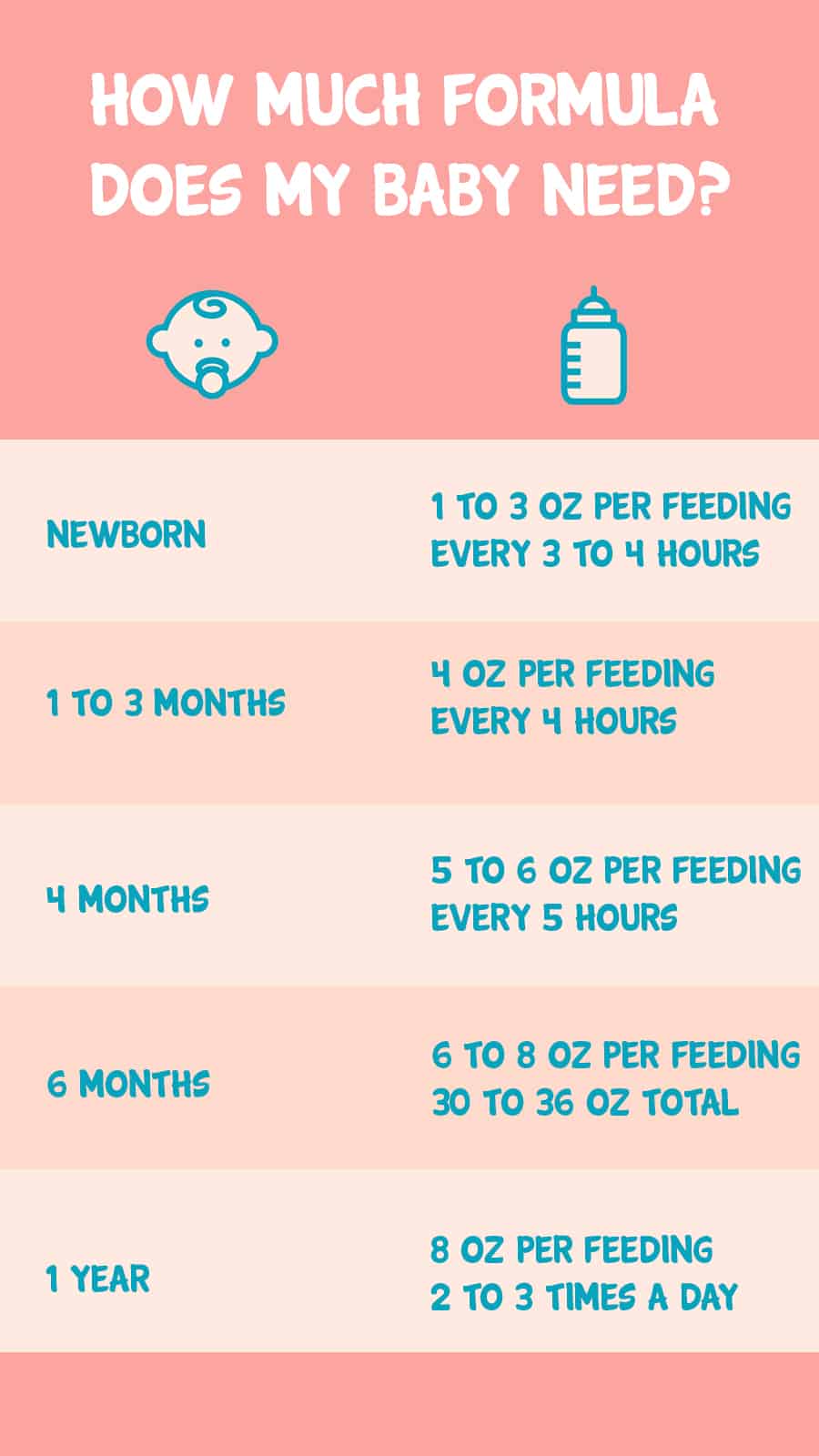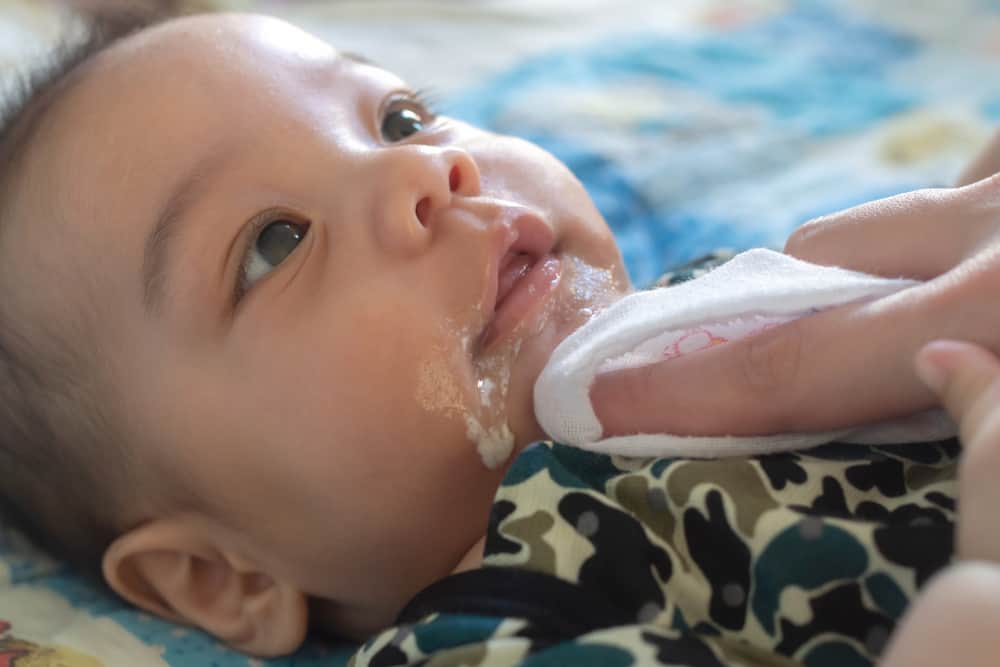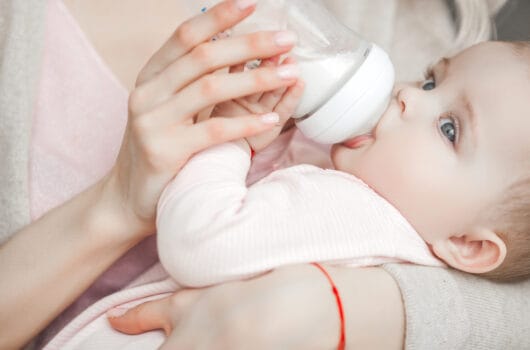Although mother’s often choose to breastfeed their babies, formula can be a great substitute. It’s more convenient, it’s less time consuming, it gives you a better idea of how much your baby is consuming. Best of all, you can even get others to do it if you’re leaving your baby with family or friends.
When it comes to formula feeding, you might be wondering how much they need to match or replace your breastfeeding schedule.
The short answer is: it depends – mainly on their age. Read on for the long answer.
Rough Guidelines According to Age
There are a lot of factors that determine how much formula a baby needs, but age is the most useful. In most cases, it’s enough of a guideline to follow. Here’s roughly how much formula your baby needs according to their age
Newborns
A newborn baby’s little tummy is about the size of a cherry, so you don’t have to feed it very much. For babies less than a month old, 1 to 3 ounces of formula per feeding is enough. Feeding them every 3 to 4 hours is recommended, but don’t force your baby to feed if it seems like they don’t want to.
One to Three Months
At one month, you can raise the amount to 4 ounces per feeding, while still giving them their formula every 4 hours.
Four Months
At four months, you can increase the amount per feeding to 5 to 6 ounces. Since your baby is able to drink more formula per feeding than before, you can now space your feedings to once every 5 hours. You can try to time it right so you can hopefully get a good night’s sleep!

Six Months
At six months, the amount of formula per feeding increases to 6 to 8 ounces, but the timing will vary since your baby can now eat solids as well.
Formula feeding time will vary depending on the time and amount of solid food they eat. At this stage, it would be better to keep track of the total amount of formula they take in in a day. Your baby’s total daily intake should be about 30 to 36 ounces, which would roughly be 5 feedings. If they’re eating solids, they won’t need this much.
One Year
After your little one celebrates her first birthday, they should be eating solid food more regularly and should rely on formula less. Around 8 ounces of formula 2 to 3 times a day should be enough as long as they are eating enough food.
Signs to Look For
Now that you know how much formula is roughly needed according to your baby’s age, what else is there to consider? Thankfully, your baby is a team player and will actually give you a few signs to help you out. Here are a few signs to look for to check if your little Goldilocks is hungry, overfed, or just right.
Signs That Your Baby Is Hungry
Lip-Smacking or Sucking
Babies will smack their lips or make sucking sounds to signify that they’re hungry. It can act as a natural alarm clock.
Rooting
You can manually test if your baby is hungry by simply putting your finger on her cheek, near her mouth. If they try to reach your finger with their mouth, this signifies that it’s time for a feeding.
Crying
The most obvious and most well-known sign of hunger, crying is usually your baby’s last resort to signal to you that they’re hungry. You will be able to tell that they’re hungry a little earlier by paying attention to the other signs listed above.
Looking for More
A trick to see if you’ve given your little one enough formula is checking their reaction once you pull out the bottle after they finish the contents. If they look around, seeming to wonder where the milk went, this usually signifies that they want more. Try giving them a few ounces at a time, then check if they still looks for more after.
Signs That Your Baby Is Overfed
Spitting Up
Spitting up, or reflux, is normal in babies. This just means that they are getting used to eating and their body may not be able to handle all that formula. They won’t be bothered by this, and it just looks like they burped with liquid instead of gas. Sometimes the liquid can even come out of their nose. Don’t be bothered by this, it’s normal.

Vomiting
In more extreme cases, your baby may vomit. This is differentiated from spitting up by being more forceful and in greater quantity than just spitting up. This would indicate your baby has overfed.
Excessive Weight Gain
If, when measuring your baby’s height and weight, you observe that their weight is climbing faster than their height is, then they may be overeating and becoming overweight. If they’re considerably higher than the average, you may want to give them less per feeding.

Signs That Your Baby Is Eating Right
Simply put, if your baby seems happy or relaxed after their feeding, they probably enjoyed a good meal. Just like adults! Track your baby’s height and weight, and if both are regularly and proportionally increasing then all signs point to healthy feeding.
FAQ
Can I Use Formula to Appease My Baby?
Your first instinct as a parent whenever your baby cries might be to feed them. Unfortunately, being hungry is not the only reason your baby will cry. They might be crying because they’re craving attention, because they got hurt, or even because they’re bored.
Sometimes downing a bottle is not the solution to life’s problems, and the same is true for them. You could try hugging or singing to them if they’re craving attention. Give them a toy to ease their boredom. Check to see if they need to burp. If you always use a bottle to appease them, might lead to overfeeding.
Babies also have a need to suck on things. The sensation of sucking on something is soothing to them, which can sometimes lead to overfeeding when the need to suck is mistaken for the need for feeding. Try offering a pacifier, their thumb, or sometimes even their whole fist as something to suck on.
How Do I Pick the Right Formula?
Now that you know how much formula your baby needs, you need to know which formula is right for them. Most formulas are made from cow’s milk, and this is likely what you will be using to feed your baby. Pediatricians recommend that you use formula that has iron, which is important to prevent babies from becoming anemic.
Some of us are allergic to milk though, in which case, according to Nemours Children’s Health System, a soy-based or hydrolyzed alternative is recommended for babies who have allergic reactions to formula made from cow’s milk. If your baby vomits frequently, has signs of stomach pain, or diarrhea, they may be allergic to cow’s milk. Don’t confuse vomiting with spitting up. Vomiting is a forceful expelling of liquid, while spitting up looks more like the liquid is overflowing, which is just a sign of overfeeding.
Some formulas have probiotics, helpful bacteria that are also present in breastmilk, which keeps the baby’s intestines healthy. You should always consult with your pediatrician about which formula is best for your baby, and you should also consult first before switching to another one.
Can I Use Any Water?
In most cases, any safe potable water is fine to mix with formula, but you might want to check with your local health agency to check if your tap water is suitable for your baby.
One thing you might want to consider is the fluoride content of your water. Mayo clinic suggests that babies need fluoride to prevent infant tooth decay. On the other hand, too much fluoride can lead to fluorosis or faint white lines on their teeth.
Typically, tap water has fluoride content while bottled water little to none. As always, it’s best to consult your pediatrician on what is best.
Remember to follow the formula manufacturer’s instructions on how much water needs to be mixed. Using too little or too much water can be harmful to your baby.
How Do I Prepare Formula?
Before preparing your baby’s formula, remember to wash your hands with soap and water and dry them afterward. Sterilize your bottles, nipples, rings, and caps before their first use. These can be washed and rinsed with soap and water in subsequent uses, as long as they are cleaned thoroughly. Then, mix formula and water at the ratio specified by the manufacturer.
Can I Heat Formula?
Formula can be served warm, in room temperature, or even cold, whichever your baby prefers. If you must heat the formula, fill a bowl with warm water and place the bottle inside. Do not microwave your baby’s bottles as these can create hotspots and burn your baby’s mouth.
Do My Bottle’s Nipple Holes Matter?
Make sure that your bottles’ nipple holes are the right size for your baby. If the holes are too big, they might gag on the fast flow of the milk. If they’re too small, your baby might get frustrated when they find it difficult to suck the milk from the bottle.
When Should I Discard Formula?
Discard leftover formula from each feeding. The bacteria from your baby’s mouth can multiply in the bottle very quickly. Prepared formula can be stored in the refrigerator for a maximum of 48 hours, after which it has to be discarded.
How Do I Feed My Baby?
Your baby’s head needs to be slightly elevated, and the bottle held up to minimize spitting up. Formula feeding, much like breastfeeding, is all about getting a feel for your baby. As adult human beings, we complain when we’re hungry, eat until we’re satisfied, and resist eating more when we’re already full.
Babies do the exact same thing, except they communicate differently. Each baby, and in turn, each feeding pattern, is unique, but it’s only a matter of time before you and your baby figure it out.
